AFL 2022: Deep dive into long-term contracts
The Lance Franklin deal which shocked the AFL is fast becoming the norm in AFL — we examine why clubs are desperate to lock their big guns in for the long-term despite the risks.
Uncertainty about when and if a Tasmanian team enters the AFL is an “elephant in the room” contributing to the trend of long-term contracts, according to a prominent player agent.
More than 55 footballers across the men’s competition are believed to be on deals of at least five years, as players seek extra security and clubs look to tie down their stars.
Twenty-three – Harry McKay, Clayton Oliver (2030), Charlie Curnow, Jacob Hopper, Luke Jackson, Callum Mills, Tim Taranto (2029), Angus Brayshaw, Josh Dunkley, Isaac Heeney, Jason Horne-Francis, Darcy Moore, Tom Papley (2028), Heath Chapman, Bailey Dale, Jordan De Goey, Dan Houston, Jack Macrae, Rowan Marshall, Tom McCartin, Daniel Rioli, Jayden Short and James Sicily (2027) – inked lengthy extensions in 2022.
SCROLL DOWN TO SEE HOW WE RATE THE RISKIEST LONG-TERM DEALS
Football figures and player managers contacted by News Corp outlined a variety of factors for the shift towards longer deals, including:
■ Clubs “trying to protect their stock” ahead of free agency;
■ Teams wanting more power at the trade table;
■ Being able to trade contracted players more easily ensures less risk for clubs;
■ Clubs seeing it as a way to lure players;
■ Stars preferring financial assurity over shorter deals on more money and;
■ More cash coming into clubs’ disposal because of the new TV rights deal
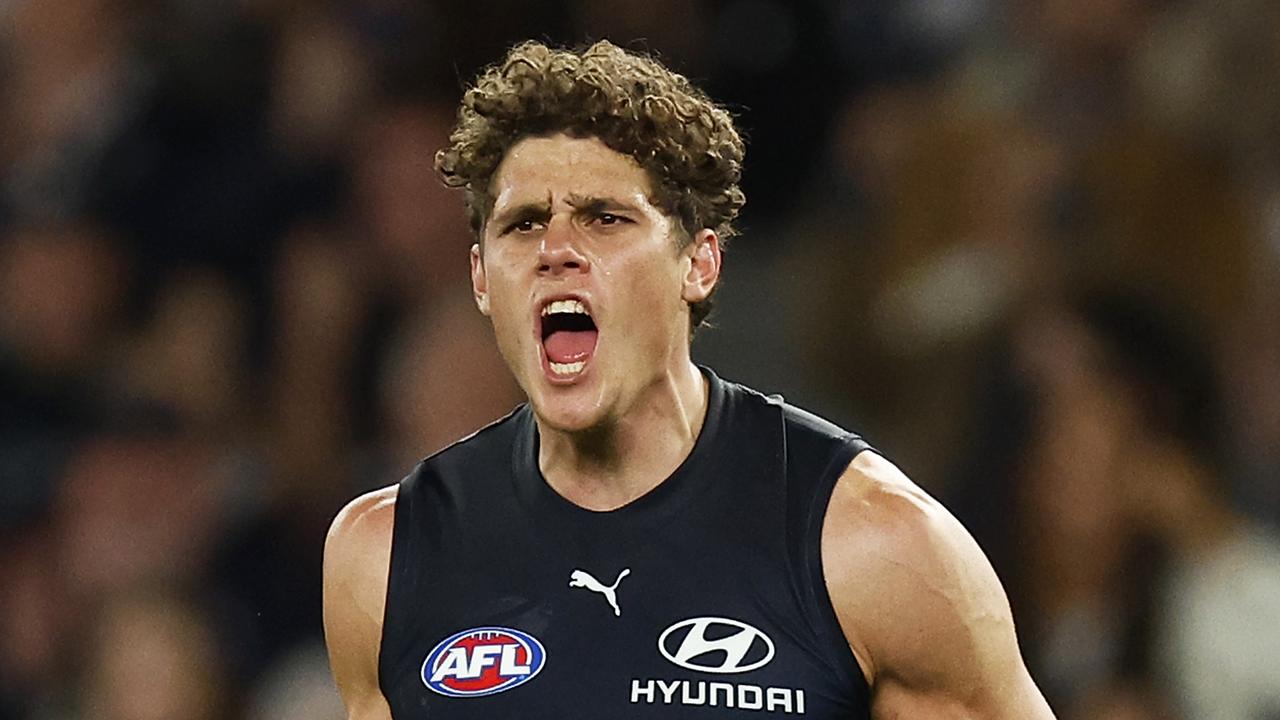
One agent said the opportunity for a potential Tasmanian side to attract quality players also loomed.
A decision on whether the island state receives a 19th licence is expected in coming months.
“It’s the elephant in the room that clubs are uncertain about,” the agent told News Corp.
“Clearly if there’s a Tasmanian team that comes in, they’ll come in with an open chequebook and will be able to build their list.
“Clubs don’t want to rebuild through that time and they want to have their players locked into contracts to know with certainty they’ve got them at their disposal.”
Long-term deals are not new – Lance Franklin’s nine-year and Alastair Lynch’s 10-season one are famous – but increased player movement has made them more prevalent.
The introduction of free agency at the end of 2012 was significant in that.
A decade on, the agent believed some teams were now doing long-term deals to get better currency at the trade table.
He said that was one of the reasons why players did not have as much power as clubs or the media suggested.
“People look at it and go ‘the player gets all the incentive’ but a lot of the time the long-term deals are for your best-and-fairest, All-Australian type players,” he said.
“So yes, players understand they have security, but clubs understand they’ve got players where they can manipulate money, whether it’s front or back-ended … and they eliminate the risk of losing a player.
“I genuinely feel as though some clubs offer a bit longer term of a contract to a player, knowing in two years they might want to push them out.
“Clubs are quite smart and realise trading a player with two or three years on their head gives them a lot more trade value than one who’s out of contract or a free agent.
“I’ve experienced it where there was a three or four-year deal signed by a player with the money back-ended and after two years, when they’re about to get paid (well), in their third and fourth year, the club tells them they’re no longer required or it’s their best option to … survey the market.
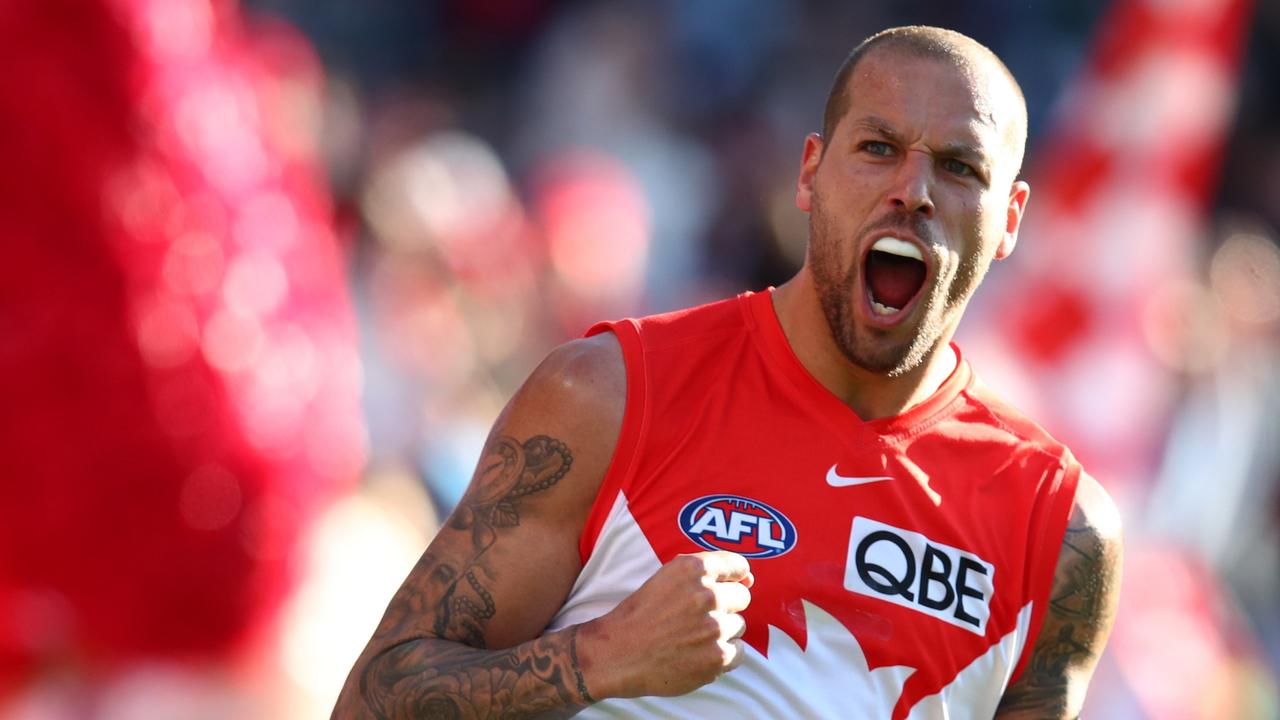
“Yes, the players get great security (from long-term deals) in that they know what they’re going to be paid, what they don’t know is where they’re going to be paid that money from and what club they’re going to be at.”
The agent said “contracts have probably never meant less in terms of security and where you’re going to be”.
“The length of the deal isn’t necessarily the issue, it’s how the money’s distributed in that,” he said.
“A club might pay you a lot right now because they think they’re going to contend in three or four years, then the back three or four years you’re on a fair bit less because they want to free up money to pay other good players or free agents.
“Where it gets tricky, like with (Jack) Bowes, is where clubs push the money back, push it back, push it back, then push a player out – that’s what I don’t like.”
Bowes signed a five-year contract extension with Gold Coast in 2019, only for the club to be so keen to offload him during the trade period that it attached the seventh pick in next month’s draft in a lopsided deal with Geelong.
A senior club figure told News Corp the balance of power was definitely with players, saying if they wanted long-term contracts it was very hard to turn them down, particularly if they were unsigned.
“Because you know the market will find him a home,” he said.
But he said the Bowes salary dump showed there was less risk now for teams who signed players to long-term contracts.
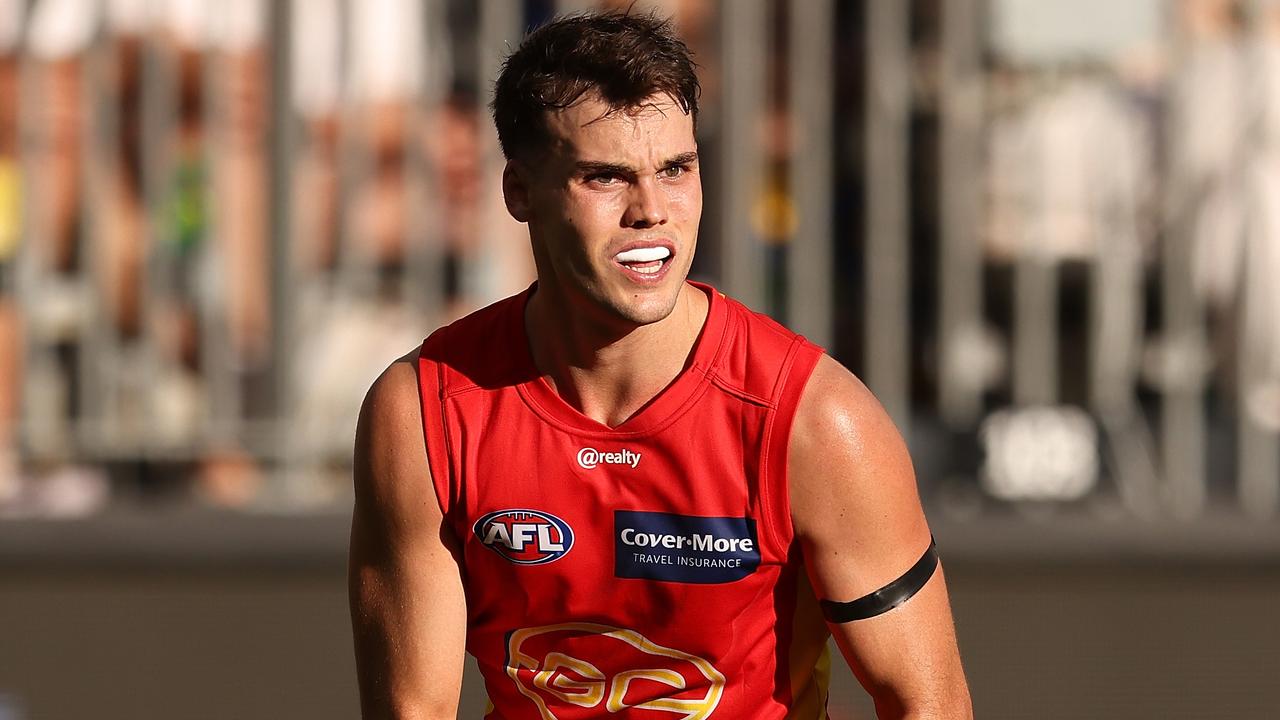
“A club’s willingness to do it is commensurate with the fact it seems we can get out of them a bit quicker or easier,” he said.
“The risk for clubs is a player who doesn’t deliver for the money that they’re on.
“But the way the AFL is allowing things, you can also get out of them quicker.
“There’s additional ways of fixing that mistake if it happens.
“The Bowes situation is a perfect one.
“I feel a little sorry for him, he’s back-ended money and the club comes to him and says ‘you’re on $800,000 over the next two years’, but then he could say ‘I wouldn’t have been if you hadn’t moved money over the time’.”
Longer deals were also being used as a way for clubs to lure players.
Richmond offered Hopper and Taranto seven-year contracts, which helped secure them from GWS when other clubs were interested.
The club figure said it was also a negotiating tool for players ahead of their free agencies.
“It might be – ‘I’m going to go next year, you can either get more for me now or wait for next year’,” he said.
“But if we’re going to commit to that period of time, there has to be some flexibility from the player as to how that’s paid.”
The agent disagreed, saying pre-agency driving longer deals was a little overstated.
“We don’t have clubs coming in saying ‘who are your free agents next year, let’s try to extract them now’ and … ‘you’ve got a player coming into free agency, we’d prefer to push them out (past it) now’,” he said.
He said some agents remained reluctant to sign huge, long-term deals because situations and clubs change very quickly, whether it be in a player’s life or with a new coach coming in.
“I think you need to do it with the right personality,” he said.
“Someone who’s focused, not on the money but on being the best player and helping their team win.”
The agent described Grundy and North Melbourne’s Jared Polec as outliers.
Collingwood signed Grundy to a seven-year deal in January 2020 then traded him to Melbourne last week because the Magpies wanted to free up salary cap space.
Polec joined the Kangaroos on a five-year deal from Port Adelaide in 2018.


“Most are premium midfielders … then your power forwards,” the agent said.
Usually, a club initiates a long-term deal by going to an agent.
The player manager then typically tries to increase the duration as far as they can without going overboard.
“If a club says ‘we’d look at a four or five-year deal’, as a manager, if you speak to your player and they’re happy, dedicated, motivated, their life is good, form is good and there’s little risk to injury, you could say ‘let’s make him a player for life at this football club, let’s do a seven-year deal’,” the agent said.
“Throw it out there and see what reception you get.
“In that circumstance, the player normally has most of the power.”
The club figure said this year’s long-term contracts all had their own circumstances behind them but teams were generally more willing these days to sign players to longer deals.
He also felt players were more inclined to forego say $300,000 or $400,000 over a six or seven-year deal in order to be guaranteed to get that money over that period.
Although some will underperform during the length of the contract, extra money coming into the game via the new TV rights deal – a $4.5b agreement from 2025-31 – means clubs will also get rewarded by locking up others.
“If they put a player on $800,000 now, but in four or five years, their value (in the market) might be $1.2m so they’ve actually made a smart investment,” the agent said.
The agent said some back-ended, long-term contracts could come back to hurt clubs, pointing to Carlton’s risk in extending McKay for seven years given his injury history.
Richmond list manager Blair Hartley said his club carefully considered handing out long-term deals and believed they would become more common, particularly because of the coming change to the Collective Bargaining Agreement.
“It just gives the clubs that flexibility and it also gives the players security,” Hartley said.
RATING THE LONG-TERM DEALS
Angus Brayshaw – Melbourne, signed to 2028
Brayshaw loomed as someone who might leave the Demons before shunning free agency and re-signing on a six-year deal in August. The midfielder/halfback is 26 and a core member of Melbourne’s flag-contending side. Having missed just three games across the past five season, he has become very durable.
RISK: Low
Charlie Curnow – Carlton, 2029
After playing 15 games total in the three seasons from 2019-21, Curnow starred this year, winning the Coleman Medal with a 64-goal haul, featuring in every match and making the All-Australian team. Could be the competition’s best forward for the next five years, just as the Blues enter their window of contention. Carlton would have had to match significant free agency offers if he entered free agency, but locking him in long-term could hold some risk due to his injury history.
RISK: Medium to High
Josh Dunkley – Brisbane Lions, 2028
Joined Brisbane via trade this month on a six-year deal to be closer to his partner’s family. Dunkley, 25, is a consistent performer and two-way midfielder but the Lions will be hoping he has a clear run with injury. He missed six games in 2020 and 10 last year, before going through unscathed this past season to win the Bulldogs’ best-and-fairest.
RISK: Low to Medium
Isaac Heeney – Sydney, 2028
Committed to Sydney for six years before round 1. Heeney is coming off a career-best campaign, kicking 49 goals and being named in the All-Australian team. At 26, he will continue to be a key part of Sydney’s premiership tilts. Has played at least 20 games in six of the past seven seasons so durability is no concern.
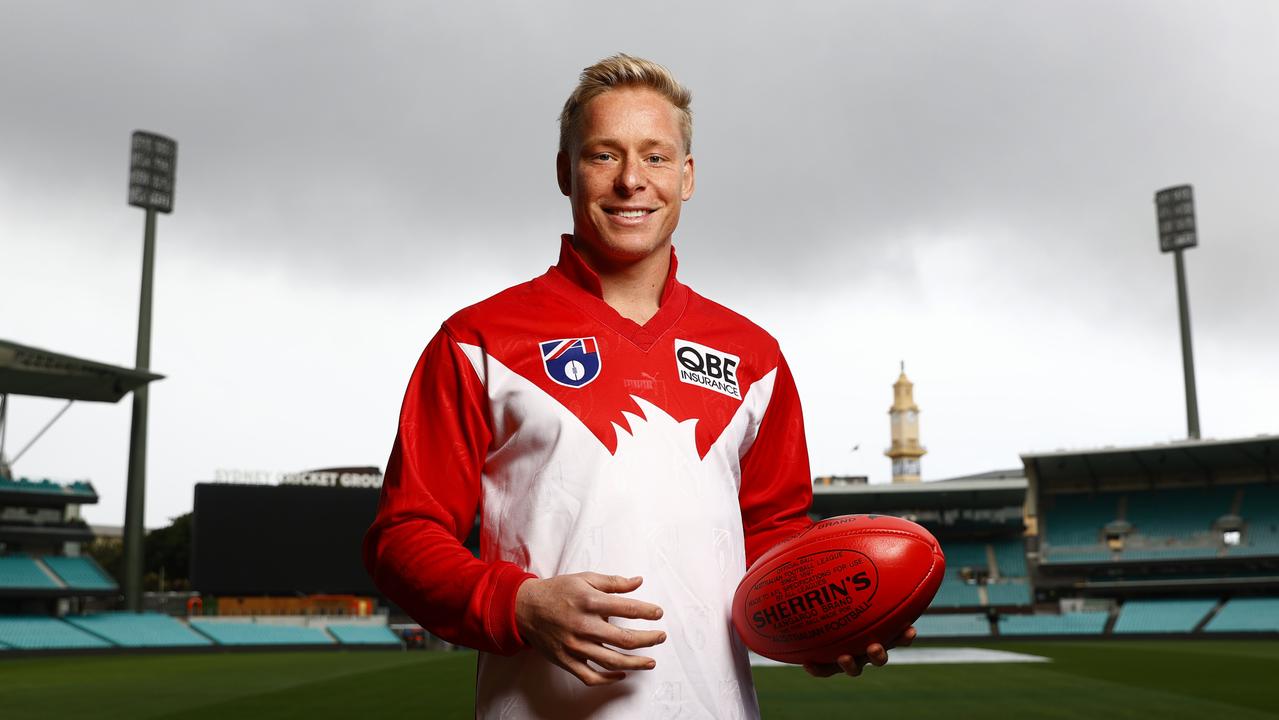
RISK: Low
Jacob Hopper – Richmond, 2029
Featured in only seven games this past season for GWS due to injury, before joining Richmond last week on a seven-year deal. The contract length proved a bargaining chip for the Tigers amid other clubs’ interest. Hopper, 25, has been brought in to help Richmond stay in premiership contention. He will be 32 by the time the deal ends.
RISK: Medium
Jason Horne-Francis – Port Adelaide, 2028
The risk with Horne-Francis is that he does not become the player much of the football world expects. His new club thinks he is a generational talent, hence signing him to a six-year contract. What if his issues from his time at North Melbourne linger? At 19, Horne-Francis is still very young and has the makings of another Patrick Dangerfield, but he also does not yet have runs on the board at the top level.
RISK: Medium to High
Luke Jackson – Fremantle, 2029
The Dockers are reported to have signed the ruck/forward to a seven-year deal after his trade from Melbourne. Aged 21, Jackson fits the Dockers’ list build and will still be in his prime when the contract ends. Looks the prototype ruckman – one who can be as influential in the middle or as a forward – for where the game is heading too.
RISK: Low
Harry McKay – Carlton, 2030
The key forward was due to become a free agent after next season but inked a seven-year extension this month, on the back of his 45-goal campaign. Turns 25 on Christmas Eve, so will be 32 by the time the deal expires. Carlton will be hoping he can form a premiership-contending partnership with Charlie Curnow over the next five years while both are in their primes. There is some risk attached due to McKay’s previous injury issues in a contract that takes him well past 30.
RISK: Medium
Callum Mills – Sydney, 2029
The Swans co-captain inked a six-year extension in September after a season in which he cemented himself as an elite player in the competition. Mills has entered his prime and will also be 32 by the time his deal ends. With Sydney building a list that will contend for a few years yet, academy product Mills is ideal to be at the forefront.
RISK: Low
Darcy Moore – Collingwood, 2028
Moore took himself off the free agency market by signing a six-year deal in April. The star defender is 26 and a key member of a Collingwood squad that is in a window of contention. The only concern is injury. Moore missed 18 games in 2018, then seven, six and nine in the subsequent three seasons before playing every match this year.
RISK: Medium
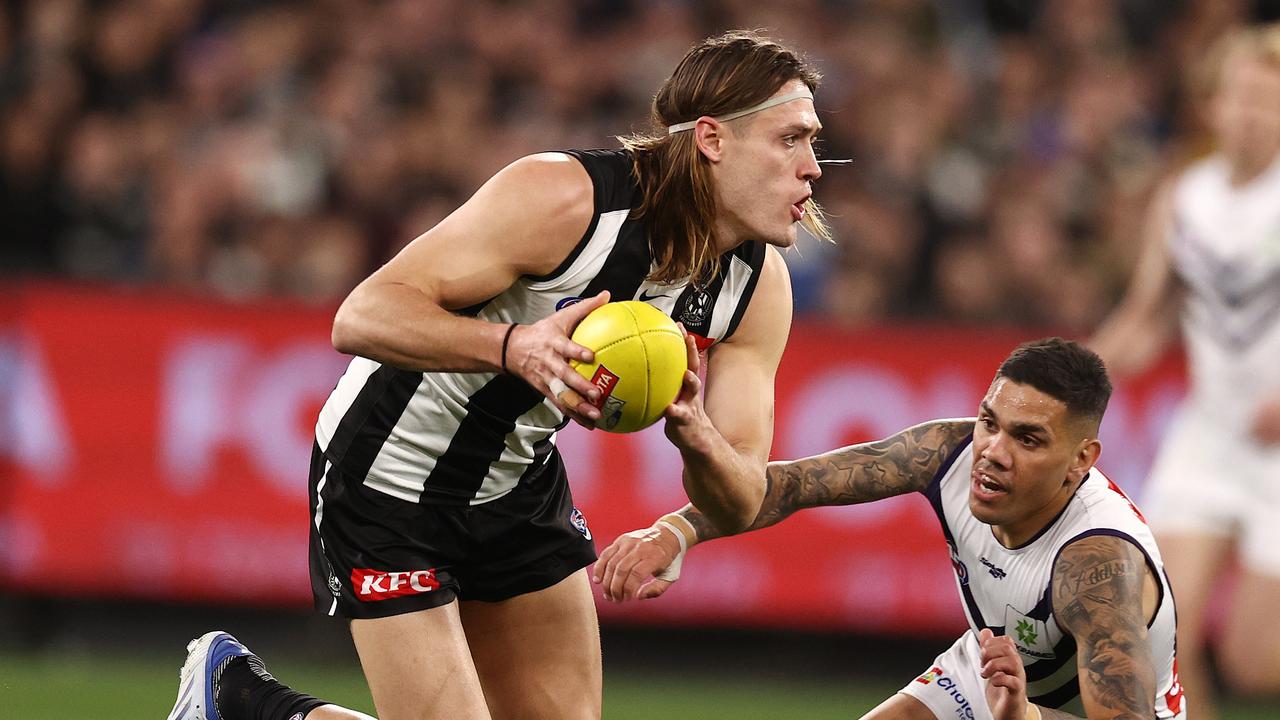
Clayton Oliver – Melbourne, 2030
The brilliant midfielder Oliver bypassed free agency by signing a seven-year extension in June. Durable and younger than you think – he has played 147 games already but is only 25 – it looks to be of minimal risk for the Demons. Keeping its stars should mean Melbourne perennial contention.
RISK: Low
Tom Papley – Sydney, 2028
Re-signed for five years after the Swans’ grand final loss. Papley is 26 and will be 32 when his contract expires. The small forward has been an integral part of Sydney’s turnaround and has hardly missed a game in recent seasons. Seems forever ago that he requested a trade to Carlton.
RISK: Low
Tim Taranto – Richmond, 2029
Like Hopper, Taranto arrives at Tigerland from GWS on a seven-year deal after being traded this month. Taranto has not been all that durable in two of the past three seasons, missing six games in both 2020 and 2022. But at 24 with the ability to play in midfield or attack, Richmond will be hoping he can help rejuvenate its premiership sides on the fly will staying in the finals mix.
RISK: Low to Medium





